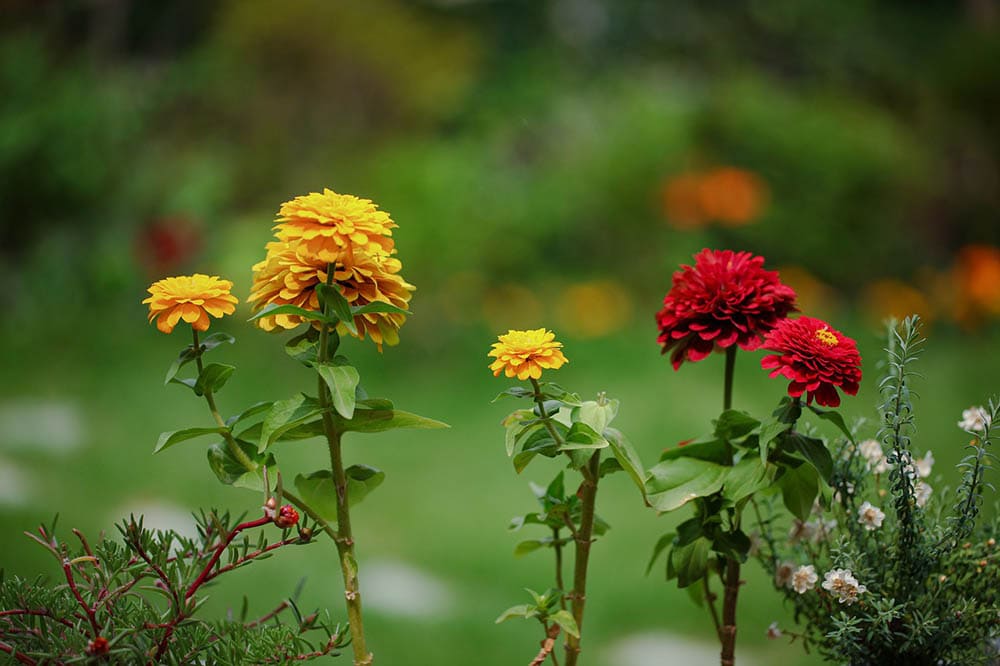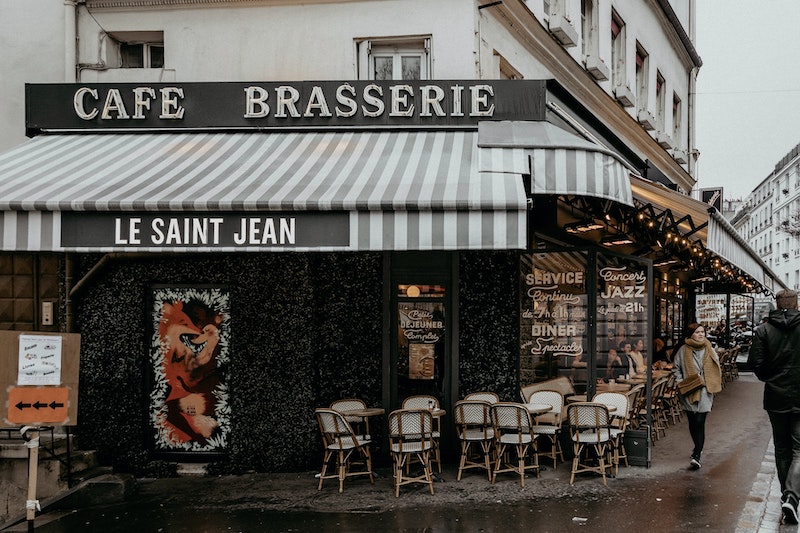
While coffee may have started in Ethiopia and quickly spread to the Middle East, hundreds of years later it has found its home in Europe. Needless to say, it has left its indelible mark on the culture of Europe.
In comparison to how coffee is consumed in the United States, Europe still knows how to savor it. It is not a continent that takes kindly to pouring fresh brew into a Styrofoam or paper cup. For Europe, it is not merely about the product, that is the beverage. It’s about an experience. We will see that it is every bit as much about the coffee house itself as it is about how the coffee is brewed and consumed.
Many European coffee cultures, especially those of Western Europe (Spain, Portugal, France) are extremely similar. If we were to go in-depth in describing all of the intricacies of each European country’s coffee culture, you’d be reading for hours. Today we will discuss the big players and influencers.

Italy
Even though Italian, Spanish, French, Portuguese, and Dutch coffee cultures are all strikingly similar, we would be remiss if we were to forgo discussing the Italian contribution to European coffee culture. What we know as the delicious, milky, frothy, coffee beverages here in the States would be non-existent if it were not for espresso, which is an Italian invention.
The original espresso machine patent was filed in 1884 by Angelo Moriondo. The invention of the espresso process was borne out of a desire to solve the problem of slow-brewing coffee. Coffee is extracted faster when ground finer, but the water takes longer to pass through it. How was this resolved? Moriondo realized that steam pressure would push the hot water through the fine grounds and express (hence the name espresso) a standard cup of coffee, but fast. This patent was later put into practice 17 years later. The speed at which this coffee was produced was its main selling point.
Fast forward to the 21st century, and now espresso has come to mean a strong, highly concentrated serving of coffee. This is the legacy of Italian coffee.
Italian Coffee Culture
About 14 billion cups of espresso are consumed per year in Italy alone. For Italians, it seems that brewed coffee is no longer an option once espresso is invented. This is indicated by the fact that most coffee houses will not serve brewed coffee. Rather, you must order a caffe Americano in order to simulate the brewed cup.
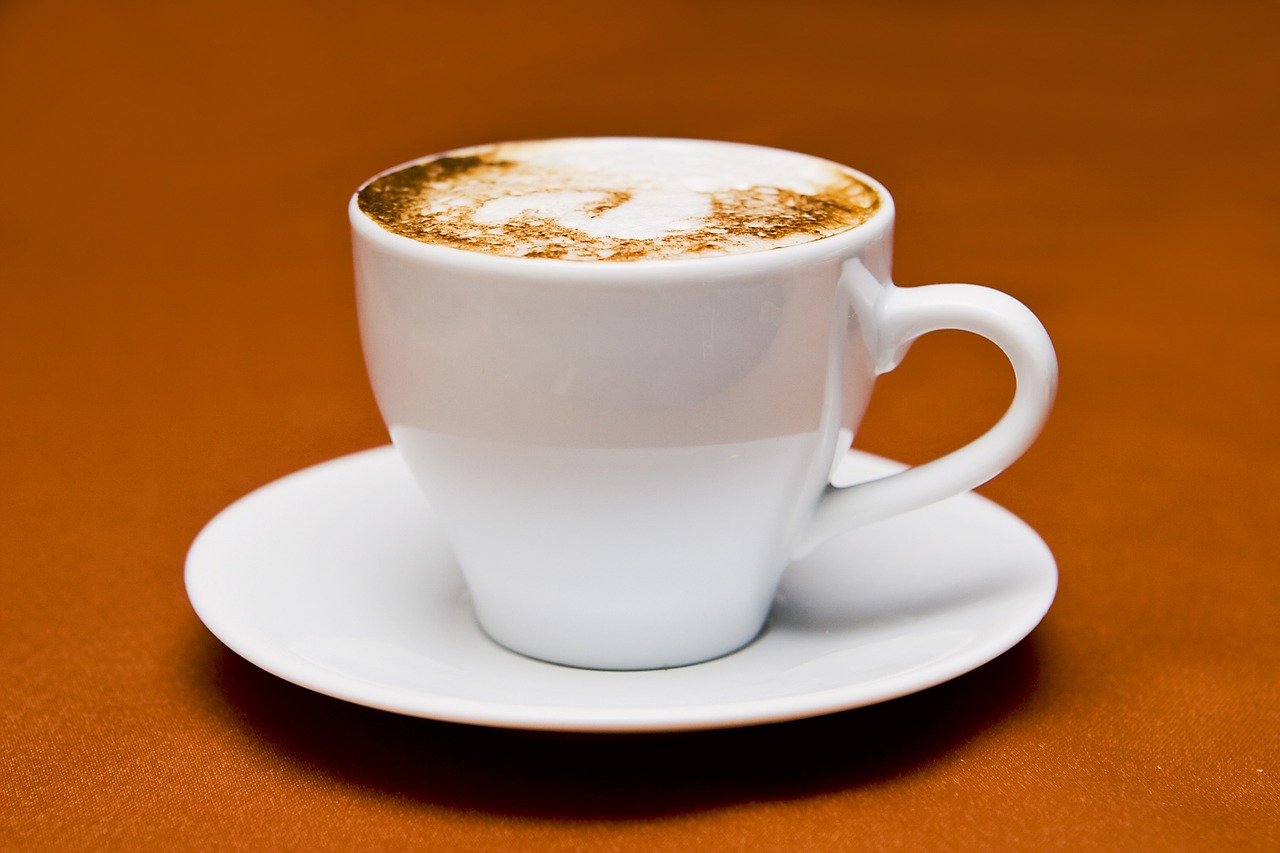
Italian Espresso Beverages
Nearly all Italian coffee beverages have espresso as their base. Here are the most popular.
- Caffe – A single shot of espresso served in a demitasse. If you want something resembling a brewed coffee, you will have to order a caffé Americano.
- Doppio – Two shots of espresso served in a demitasse.
- Caffe ristretto – A caffé made with less water. This makes the espresso stronger.
- Caffe macchiato – Espresso served with a small amount of warm milk.
- Caffe con Panna – Espresso served with whipped cream.
- Caffe lungo – Similar to a caffe Americano except the hot water is run through the same coffee grounds used to brew the espresso.
- Cappuccino – Espresso with steamed milk foam.
- Caffe freddo – Espresso with ice
- Caffe shakerato – Espresso shaken with sugar until frothy and then poured over ice
- Caffe affogato – Espresso with a small scoop of gelato (usually vanilla)
Facets of Italian Coffee Culture
The Bar as the Italians know it can mean espresso bar, or coffee shop. They are usually advertised with the same name. Most are independently owned. There are not many Starbucks stores open in Italy. The first was opened in 2018.
Il Bar is a common sight everywhere in Italy, from the smallest town to the largest cities. Many of these espresso bars also serve wine and liquor. So, you can swing by in the morning on your way to work for a caffe, and on the way home grab a drink to unwind. But even though they serve alcoholic beverages, Italians will drink espresso no matter what time of the day. Most importantly, the bar is a place to socialize or read the paper. No to-go cups here!
Even though the bar is a real neighborhood gathering place, Italians do drink coffee at home. Given that most don’t have a commercial-grade espresso machine sitting in their kitchen, the Moka pot is the best option since it neither takes up much room nor takes a highly trained barista to operate.
The Moka pot is a two-chamber system. The lower chamber is filled with water on top of which sits the filter with espresso grind coffee. The upper chamber is secured on top of both. The pot is placed over low heat, preferably a gas flame. The vapor pressure pushes the water through the coffee grounds and fills the upper chamber. This is not exactly traditional espresso, but it uses the same principles to achieve much stronger coffee than a Mr. Coffee!

Italian Coffee Culture Summary
- Espresso is indispensable- they absolutely can’t do without it!
- Italians drink coffee day or night.
- Since they are accustomed to espresso, they don’t typically enjoy weak coffee.
- Coffee goes great with just about anything, including booze (caffe corretto) and dessert (affogato).
- Caffeinate often and share with others!
France
French coffee culture is very similar to Italian coffee culture. While the French have their own variations of Italian espresso beverages, they are often a translation (either literally or in idea) of the Italian. Even though the French sometimes call espresso café express, don’t be deceived! This in no way implies that it is made to go out the door of the café with you!

French Coffee Culture
French Espresso Beverages
Here are some of the most popular French espresso drinks. Where applicable we have mentioned their Italian equivalent.
- Café noir/café express – This is a single shot of espresso served in a demitasse. Italian equivalent: Caffe.
- Café filtré – This is essentially drip coffee but is usually consumed in homes rather than in cities.
- Café allongé – Espresso diluted with hot water run through the same grounds to make the espresso. Italian equivalent: Caffe lungo.
- Noisette – Espresso served with a small amount of steamed milk. The color is that of a hazelnut, which is what noisette Italian equivalent: Caffe macchiato
- Café au lait – This is café filtré served with hot milk in a large bowl-like mug. It is different from a latte in that it uses strong drip coffee instead of espresso. The Spanish have their own version called café con leche.
- Café crème – Espresso with a decent amount of steamed milk foam on top. Italian equivalent:

Facets of French Coffee Culture
The French, much like the Italians, will drink coffee at any point during the day. But they take their coffee differently depending on the time of day.
Typically, the only time that coffee beverages with milk are consumed is before lunchtime. Incidentally, breakfast is the only meal with which coffee is enjoyed. Straight café noir is preferred to keep your wheels turning in the afternoon. Coffee is consumed between meals and sometimes, intentionally after meals in order to move digestion along.
Coffee is always enjoyed in the place of purchase. In other words, you will seldom see a French person taking their coffee to go. That is unless they are a Starbucks defector! Neighborhood cafes in the morning are usually replete with people gearing up for the day (or just relaxing) and enjoying their drinks. The smell of cigarette smoke usually lingers in the air, especially at café patios.
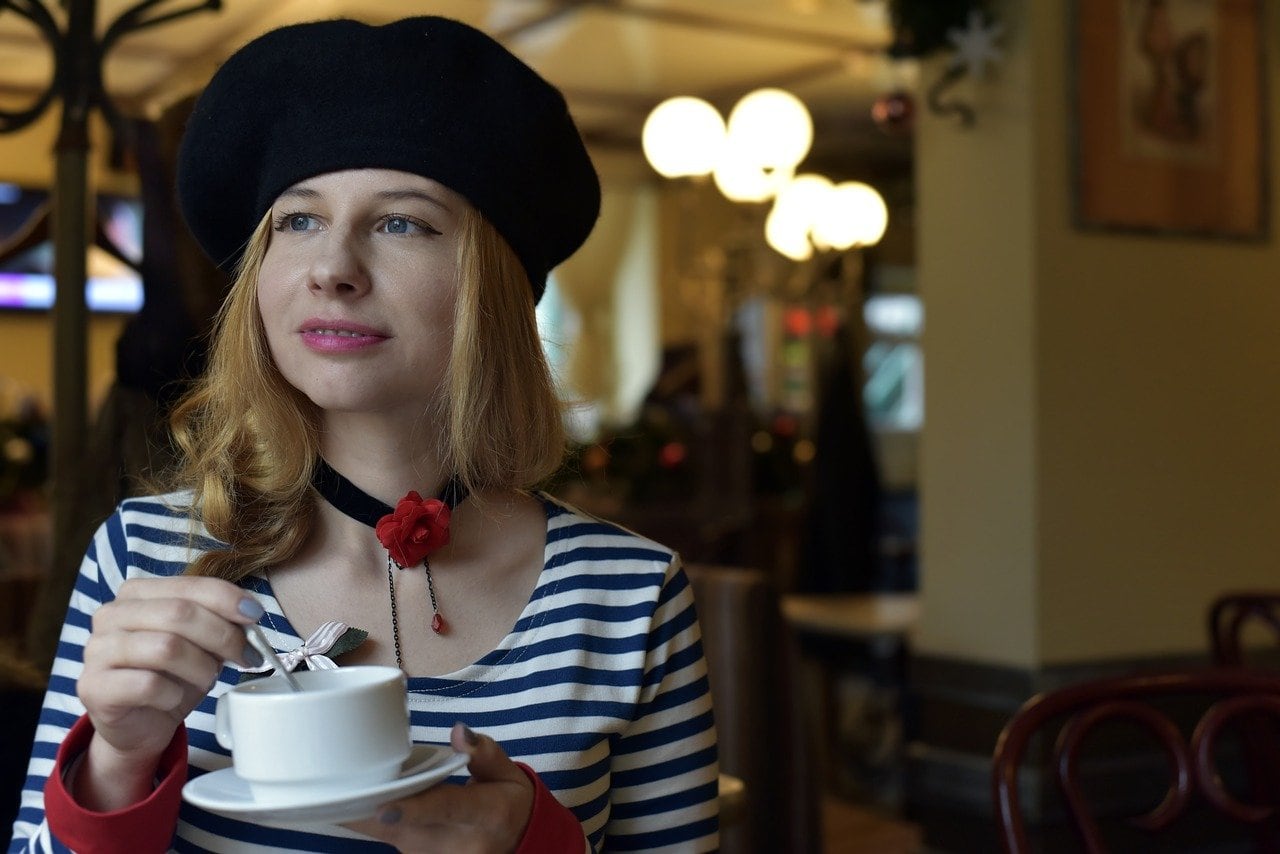
French Coffee Culture Summary
- Coffee all day.
- Only eat breakfast with coffee.
- Milk in coffee only before noon. Espresso after midday.
- Sit down and enjoy it!

Greece
We began with Italy and now we will be moving to the other side of the Mediterranean. We absolutely cannot begin a conversation about Greek culture without talking about coffee. Coffee is almost always available.
The story of coffee in Greece begins like many things in Greek culture, with the Fall of Constantinople in 1453 to the Ottoman Turks. The Turks had already been consuming coffee that they had inherited from the Arab Muslim world.
Greek Coffee Culture
“Greek” or “Turkish” Coffee?
The primary method they used to make their coffee was what is called the cezve in Turkish, and briki in Greek. Essentially it is a small pot with a long handle. It is made of brass or copper. The medium roasted and extremely fine ground coffee is put into the pot with water and brought to a boil. As it boils, the aerated foam of the coffee is removed and gently placed into demitasses. Then the pot is placed back on the stove. When it foams again, the pot is removed from the stove and gently poured into the demitasses. Sugar is optional and milk or cream is rarely if ever used in this traditional method.
The name in the past fifty years has been a subject of controversy. For the majority of history, it was known among the Greeks (or Romans, as they understood themselves prior to the Revolution of 1821) as Turkish Coffee. It wasn’t until the Turkish invasion of Cyprus (a Greek-speaking country) in 1974 that the popular drink became politicized on a near-official level.
Today in Greece, unless you mean to offend the locals, order a Greek coffee rather than a Turkish coffee.
Greek Coffee Beverages
Far and away the most traditional Greek coffee beverage is coffee made in the bríki. But there are a number of other beverages that are also popular. One could say that outside of somewhat ceremonial settings (diplomatic meetings, reception of guests, etc.) the briki has waned in everyday popularity. Many Greeks today prefer Italian-style espresso instead of traditional Greek coffee. Here are the most popular Greek coffee beverages:
- Frapé – A cold beverage made from instant coffee, milk, ice, and sugar. You can order it skétos (plain), métrios (medium sweetened), glykós (sweet), varí glykós (very sweet).
- Frédo – Iced espresso often served with milk or cream, much like the Italian caffe freddo.
- Frédo kapoutsíno – The Greeks invented democracy, the Olympics, and the discipline of philosophy. This time they’ve shown Starbucks that it is in fact possible to make an iced cappuccino!
- Bríki – The traditional Greek coffee made from finely ground medium roast brought to a boil in a brass or copper pot on the stovetop.
Facets of Greek Coffee Culture
Where Do Greeks Drink Coffee?
A survey of traditional Greek coffee culture would be incomplete if we did not discuss the kafenío. This is the Greek coffee shop in the most traditional sense, almost exclusively reserved for men. It is more of an establishment, a men’s club. Kafenía are not as widespread as they used to be- they can mostly be found in villages or in certain touristy spots. This was a spot for men to meet, socialize, play távli (backgammon), and discuss politics and the matters of the day. The women usually would meet in each other’s homes.
The kafetéria is the coffee shop in the more modern Western European sense. It is a place open to all. They usually serve espresso though many will still serve Greek coffee. However, as we have already mentioned, espresso is usually preferred these days.
To-go coffee is a relatively new phenomenon in Greece and could be regarded by some as a cultural transgression. Den pirázi! (It doesn’t matter!) is a common attitude many Greeks carry with them. Work can wait. Sit. Enjoy your coffee or espresso with your breakfast, loukoumi (Turkish delight), or baklava at dessert.
Cup Reading
Culturally, nearly all Greeks are Orthodox Christians. But they have inherited a strand of superstition not condoned by the official teaching of the Church. This includes fear of the máti (evil eye) and clinking coffee cups (bad luck!). One of these superstitions is the attempted fortune-telling via coffee sediment at the bottom of their demitasse cups. It is treated almost like a secret that yiayiá or pappoú will whisper across the table when no one is looking! Shh!
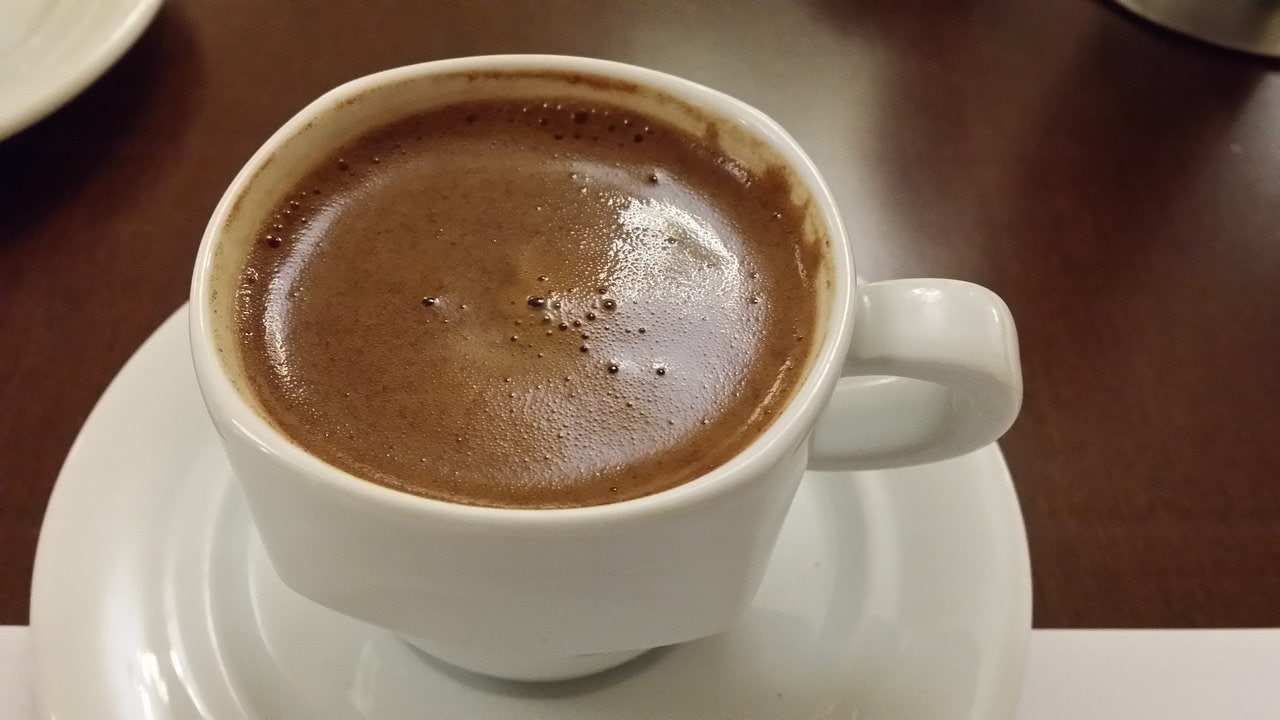
Greek Coffee Culture Summary
- Greek coffee is still consumed but espresso is a new favorite.
- Greek climate is very warm, so they love their iced coffee!
- Coffee is important and has a historical and sometimes political legacy.
- Sit down and enjoy! Den pirázi!

Ireland
Representing the British Isles is Ireland which, is still more of a tea-drinking culture than a large consumer of coffee. But in recent years coffee has grown in popularity. A study done in 2016 stated that about 70% of Irish people drink at least one cup of coffee per day.
Irish Coffee Culture
Much like the rest of Western Europe, you will rarely find filtered coffee as you would in the United States. Most Europeans, Irish included, prefer espresso. This includes an Americano if they must! While we will list the most popular Irish coffee beverages, one stands out among them all as being a unique contribution: Irish Coffee.
Ireland is well known for being a country that consumes a lot of alcohol, specifically beer and whiskey. Guinness beer is the result of an attempt to reduce the amount of drinking and alcoholism in Ireland. The thought was that by creating a rich, heavy beer with a ton of calories, people would be discouraged from drinking more due to being full. But we suspect that people just put on a few more pounds and kept drinking.
Beer aside, this demonstrates that the Irish do like a drink. And they are not afraid to put it in their coffee! So here are the most popular Irish coffee beverages.

Irish Coffee Beverages
- Espresso – A shot of espresso. This is what you will likely get if you order a coffee.
- Latte – Much like a latte you would get here in the states. Espresso with warm or steamed milk.
- Americano – Espresso with hot water.
- Irish Coffee – Espresso (sometimes diluted) or brewed filter coffee, sugar, whiskey, and topped with cream.
Summary of Irish Coffee Culture
- Culturally it is very similar to Continental Western European coffee culture.
- Ireland is still not a to-go coffee culture.
- People enjoy sitting down to have their coffee.
- Filtered coffee is not very common.
- They’re not afraid to put a little booze in their espresso!

Finland
Representing Northern Europe is Finland. Though we mention them last, they are certainly not the least. Finland consumes more coffee per capita than any other country in the world. Their Scandinavian neighbor Norway is the runner-up. These two cold countries are sipping on hot coffee year-round, almost non-stop.
Finnish Coffee Culture
Since espresso is still a relatively new thing in Finland, it is most consumed in cafes. For the most part, Finns consume coffee much like those of us in the states. They drink filtered coffee, most often from a coffee pot.
In addition to the way they consume coffee being different from most other European countries, Finns also prefer lighter roast, something which even in the United States is not nearly as popular as medium or dark roast.
Finnish Coffee Beverages
While Finns are likely to serve the same kinds of espresso drinks as you would get in a French café, for example, they still have some distinctive traits. Here are the most popular Finnish coffee beverages.
- Kahve – Filtered coffee from a coffee pot or a pour over. The Finns do not need to create a café Americano to get the “watery” strength that is often looked upon with suspicion by many other Europeans. They enjoy it this way. It can be enjoyed with milk, cream, sugar, or all three!
- Kaffeost – Cheese + coffee. Yes. A sweet cheese called Leipäjuusto is immersed in a cup of hot coffee and stirred until the coffee is cheesy and creamy. It is more of an afternoon snack or dessert coffee- not something with which you’d start your day. It can be served with kaffebröd, which is a sweet coffee bread.
- Espresso Beverages – Espresso beverages are most popular in coffee houses, but many homes do have Moka pots for a strong brew.
Facets of Finnish Coffee Culture
The Italians and Greeks can be fiery (like their climate), passionate, loud, and boisterous. In these cultures, talking over one another is perfectly normal. In some instances, to do otherwise could be considered rude by some people! However, it is not so with the Finns. For while they do enjoy socialization, especially over a cup of coffee, socialization can also occur in perfect silence. They prefer to talk in turn and are comfortable with long pauses.
Coffee breaks are also a common way that the workday is divided, even legally. A collective labor agreement stated that there ought to be two 15-minute breaks allotted for coffee consumption! That’s how integral coffee is to the schedule of the average Finn!
Finnish Coffee Culture Summary
- Finns drink mostly light roasted, filtered coffee, either from a coffee pot or a pour over.
- Espresso is mostly reserved for cafes.
- The workday revolves around when they can caffeinate next.
- Preserving stillness and silence is a social virtue, especially when drinking coffee.
- Is it time for a coffee break right now? Yes!

European Coffee Culture Final Thoughts
If you’re planning to visit Europe and don’t drink coffee, it’s about time you start. It will be hard to dodge getting enmeshed in their coffee culture. Not having a cup might be considered a social misstep to some. Finally, building up a tolerance to caffeine is invaluable as most of these European countries drink coffee any time of the day as a social activity. Cheers! But don’t clink your mug in Greece!
RELATED READ: What Was Nordic Coffee Culture?
Featured Image Credit: Unsplash
Table of Contents
- Italy
- Italian Coffee Culture
- Italian Coffee Culture Summary
- France
- French Coffee Culture
- French Coffee Culture Summary
- Greece
- Greek Coffee Culture
- Greek Coffee Culture Summary
- Ireland
- Irish Coffee Culture
- Summary of Irish Coffee Culture
- Finland
- Finnish Coffee Culture
- Finnish Coffee Culture Summary
- European Coffee Culture Final Thoughts






